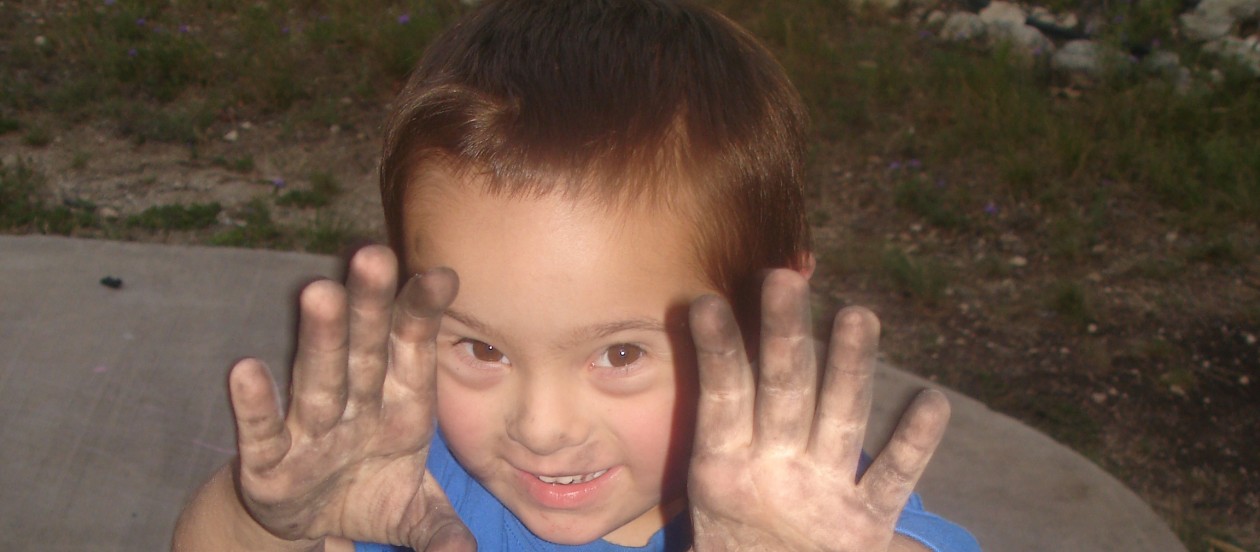I’ve come up with a system that is working very well for Noah (age 5, with Down syndrome) and his little sister, Bella (age 3, neurotypical). It’s a simple hands-on way to keep their attention during story time while also learning and practicing foundational skills which are often a challenge for children with Down syndrome and autism.
Method:
PEC Build-As-You-Go Story Board
Skills Practiced:
- PEC literacy
- Sequencing
- Reading (Listening) Comprehension
- Narration
- Matching
- Generalizing
Materials:
- Simple picture book of 5-20 pages. For starters, you may do best by making your own short story books using simple phrases and pictures or enlarged PECs. http://tarheelreader.org/ is a fantastic resource for simple printable books that work well with this activity. (Thanks to www.wecandoallthings.blogspot.com for sharing the website.)
- PECs created of main word on each page or spread. For example, if you were doing a PEC Build-As-You-Go Story Board for Goodnight Moon, for the page that says “Goodnight Little Mouse,” you would have a PEC for a mouse. Place loop velcro dots on the back of the middle of each laminated PEC. (Note: The PEC does not have to be an exact representation of the picture in the book. Allowing variation will require your child to use his generalizing skills; i.e. the mouse in the book may be brown but the mouse on the PEC may be gray, but they are both mice.)
- One PEC board. (Laminated sheet of paper or cardstock with three strips of hook velcro running lengthwise across the top, middle and bottom.)
Procedure:
- Choose a book and place the corresponding PECs on the top and middle velcro strip on your PEC board. You may want to start by displaying the PECs in chronological order, but once your child has mastered the system that way, start mixing the PECs up.
- Sit with your child close to you and read the first page or spread. When you complete the sentence containing the first PEC, point to the picture in the book and ask your child for the corresponding PEC; for example, “Mouse, where is your mouse.” Direct your child to put the appropriate PEC on the bottom velcro strip and advance from left to right.
- Repeat the procedure as you move through the book.
- When you have finished the book, start retelling the story in your own words using the PECs as your cues and pointing to them as you go.
A Step Up:
Once your child has mastered this system, after you first read the book to them while they use the PECS, have THEM retell the story to you using the PECs as their cues. To help them along, you may want to begin the sentence and then allow them to finish. For example, you would say, “Goodnight,” and your child would point to the PEC and say “mouse.”
Two Steps Up:
This system also works with children who have independent reading assignments, especially those who struggle with reading comprehension or narration. This is age appropriate from kindergarten all the way up through high school.
- Create your PECs (or other small pictures or illustrations) of key points in the book.
- Mix up the PECs and provide your child a PEC board.
- Have your child place the PECs in chronological order on his PEC board as he reads the book.
- Have your child tell the story back to you (narrate) orally or in writing using the PEC board as a reminder of his key points.
This emphasis on narration is completely consistent with a classical education where narration skills are emphasized as in Susan Wise Bauer’s book, The Well-Trained Mind and the highly acclaimed Veritas Press series, two very popular homeschool programs. Visual cueing is a powerful technique when it comes to working memory and recall, and narration skills are the hallmark of reading comprehension. Put them together and you’ve got a sure winner.
Because of our early success with this technique, Build-As-You-Go Story Boards will be a regular feature here in the coming months. Stay tuned for A Trip to the Zoo printable book and Build-As-You-Go Story Board.
